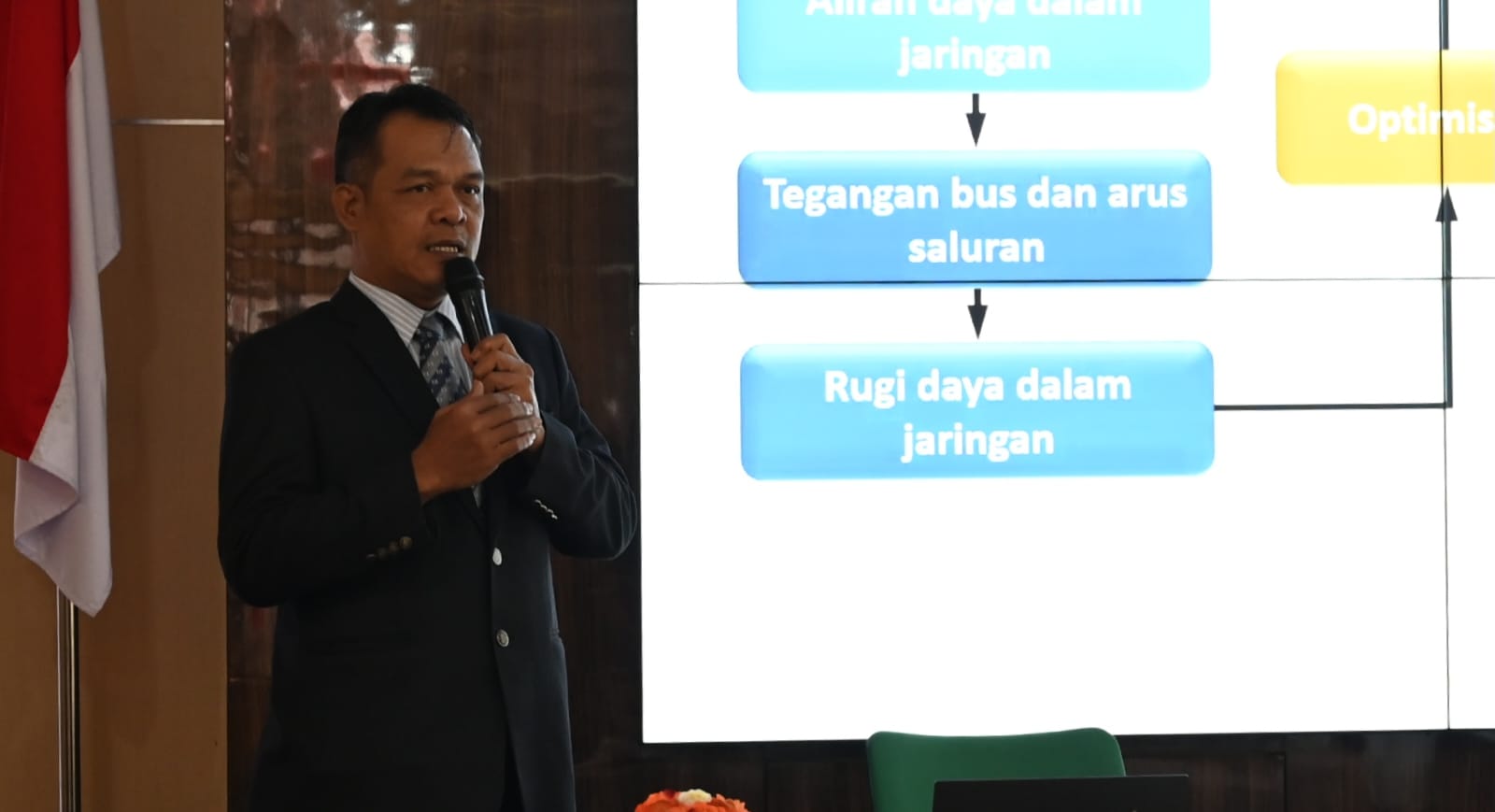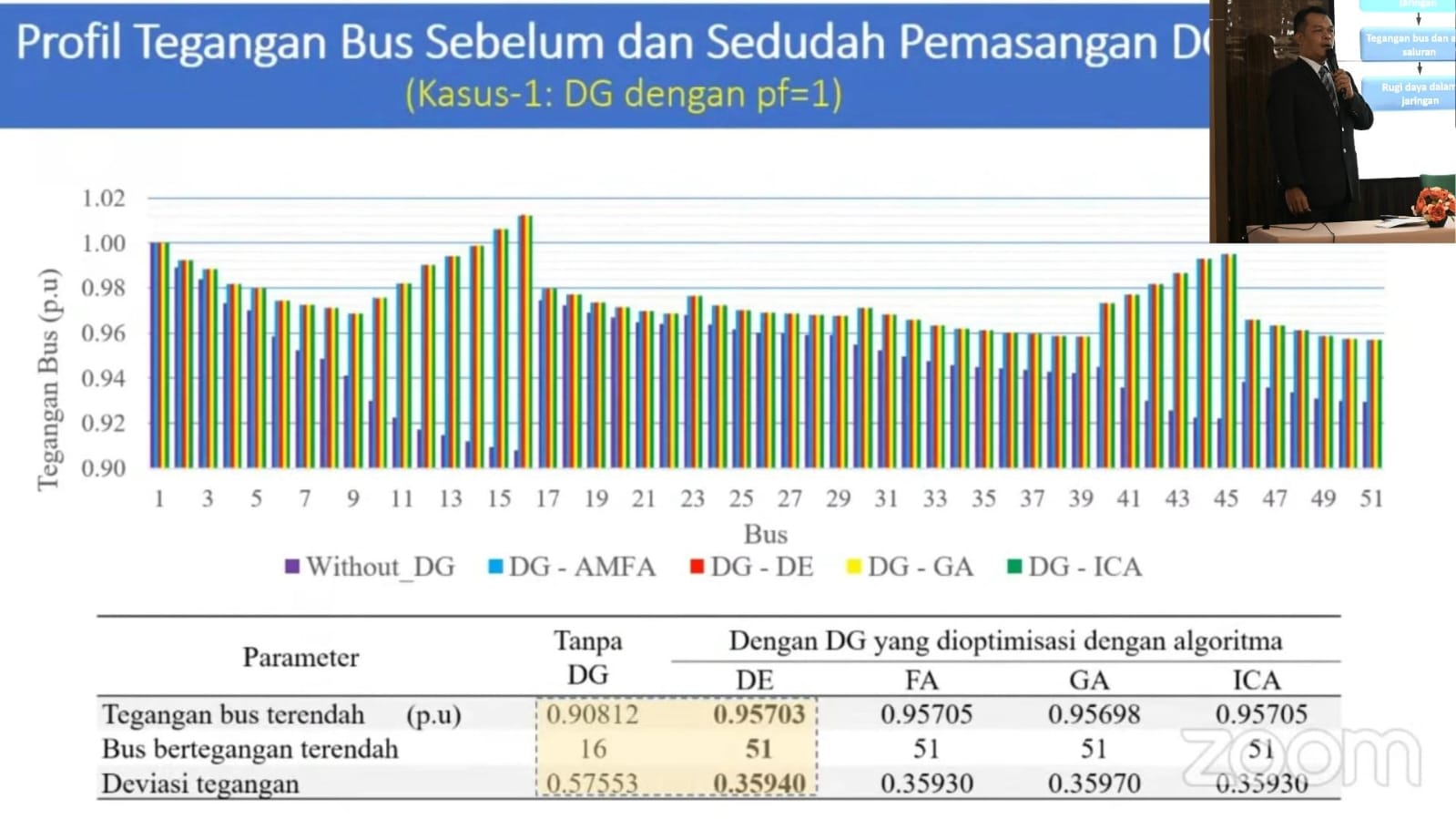ITS Doctor Proposes Distribution Network Optimization

Dr Sugiono ST MT while presenting his dissertation on Distribution Network Optimization with Distributed Generation Integration at the Doctoral Promotion Session of the ITS Electrical Engineering Department
ITS Campus, ITS News — The lengthy electricity distribution channels often result in significant power loss and voltage drops. To address this issue, a recent doctoral graduate from the Department of Electrical Engineering at Institut Teknologi Sepuluh Nopember (DTE ITS) has proposed a distribution network optimization system through the integration of Distributed Generation (DG).
During his Doctoral Promotion Session at DTE ITS on Monday (12/8), Dr. Sujono ST MT explained that DG is a system that places small-scale power generation units closer to the load center. These generation units can be based on renewable energy sources such as solar, wind, or biomass. According to Sujono, this system can improve voltage stability and network efficiency while reducing the power flow from the main grid.
Sujono further explained that when the distribution network is disconnected from the main grid, an optimally positioned DG can maintain a continuous power supply to critical loads. This ensures the safety of vital loads that cannot tolerate power interruptions. “DG also has relatively low operational costs, offering significant profit potential,” he said.
The Karanganyar native added that his DG integration optimization approach utilizes approximation methods by applying metaheuristic algorithms. Sujono explained that these algorithms are used to find optimal solutions for complex optimization problems. “These algorithms are also part of artificial intelligence,” added the researcher.

Dr Sujono ST MT when presenting a comparison of voltage profiles before and after the installation of distributed generation (DG) at the Doctoral Promotion Session of the ITS Electrical Engineering Department
The algorithms employed by Sujono include the Grey Wolf Optimizer (GWO), Particle Swarm Optimization (PSO), Differential Evolution (DEA), and the Adaptive Modified Firefly Algorithm (AMFA). Among these, Sujono noted that the AMFA-DE algorithm is the most effective in delivering optimal results for DG optimization. “This algorithm can find more accurate and efficient patterns in complex data sets,” he stated.
In his development, the lecturer from Budi Luhur University’s Department of Electrical Engineering emphasized that technology in efficient energy conversion systems can significantly enhance DG’s power generation capacity. Affordable, efficient, and reliable energy storage technologies can accelerate DG adoption in meeting electricity demand.

Dr Sujono ST MT (right) with his wife after the doctoral promotion hearing held at the ITS Electrical Engineering Department
Sujono also highlighted that renewable energy-based DG relies heavily on natural conditions, introducing uncertainty in power generation capabilities. Therefore, he stressed the importance of studies related to predicting DG’s generation potential. He is committed to advancing research on optimizing affordable, efficient, and environmentally friendly energy storage and network protection systems.
Looking ahead, this graduate from Universitas Indonesia’s Master’s Program in Electrical Engineering hopes that the public will become aware of Indonesia’s vast and abundant renewable energy potential. According to Sujono, policies related to renewable energy utilization must be implemented to encourage the use of these resources. “This is crucial for meeting the public’s electricity needs and accelerating the process of energy distribution,” he concluded. (ITS Public Relations)
Reporter: Shafa Annisa Ramadhani
Related News
-
ITS Wins 2024 Project Implementation Award for Commitment to Gender Implementation
ITS Campus, ITS News —Not only technology-oriented, Institut Teknologi Sepuluh Nopember (ITS) also show its commitment to support gender
August 15, 2024 18:08 -
ITS Professor Researched the Role of Human Integration in Sustainable Architecture
ITS Campus, ITS News –The developing era has an impact on many aspects of life, including in the field
August 15, 2024 18:08 -
ITS Sends Off Group for Joint Homecoming to 64 Destination Areas
ITS Campus, ITS News — Approaching Eid al-Fitr, the Sepuluh Nopember Institute of Technology (ITS) is once again facilitating academics who want
August 15, 2024 18:08 -
ITS Expert: IHSG Decline Has Significant Impact on Indonesian Economy
ITS Campus, ITS News — The decline in the Composite Stock Price Index (IHSG) by five percent on March 18,
August 15, 2024 18:08
